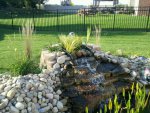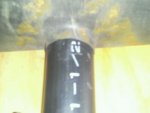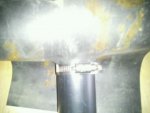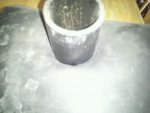I use the same method waterbug, but also add a small layer of goop, never have had a leak.
A bog is any area that is mainly dirt/gravel that stays wet.
"
A bog is a type of wetland characterized by a thick mat of partially decomposed plant material and highly acidic water. The conditions for bog formation are abundant in some regions of the Northern Hemisphere, which is where the majority of the world's bogs are found. In addition to being unique ecosystems, bogs have also been useful for humans for thousands of years, providing a source of fuel in the form of
peat and food in the form of berries which grow on bog shrubs such as
cranberries. Bogs also have cultural and religious significance in some parts of the world.
Bogs start out as slow moving rivers or ponds which are slowly taken over by sphagnum, a genus of
moss which encompasses over 150 species. Cooler weather promotes bog formation, because the moss decays very slowly, sinking to the bottom of the bog while a layer of growing moss accumulates on top, restricting
oxygen supplies to the lower water while also blocking heat. As a result, plant material decays very slowly, and the water becomes acidic.
Generally, bogs have poor drainage and no supply of fresh water other than rain. Over time, a bog will slowly fill in, creating ground on which shrubs and sometimes small trees can grow. A wide range of plant and animal species are adapted for bog living, including some lichens, turtles, berries, and carnivorous plants. Bog environments are also valuable because they can prevent flooding by acting as a buffer zone."





